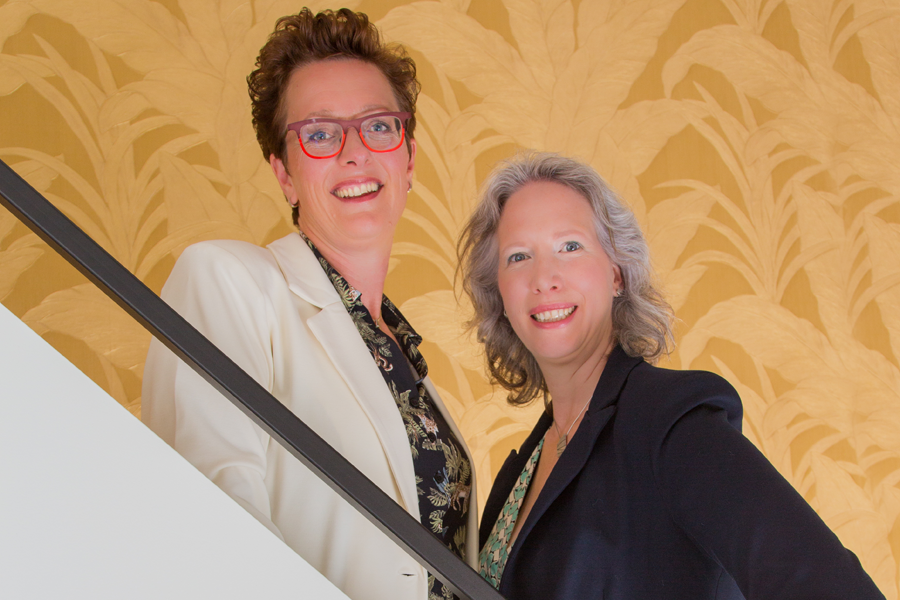Martine Paulusse and her mission to improve job satisfaction

There are numerous reasons to be passionate about working within the world of learning. Some of us want to transfer the knowledge we have gathered over the years while others get a real sense of accomplishment from supporting people in their development. Both examples are driving forces for Martine Paulusse; however, there is one motivation missing from this list – job satisfaction.
The founder of Paulusse Bedrijfsopleidingen is a real expert in the area of workplace learning within the food industry. Her passion? To improve people’s talents and make them better at their job.

Martine Paulusse
• 1974 • Education: Food Technology • Company: Paulusse Bedrijfsopleidingen • Job: Owner & Expert Workplace Training • Likes: Reading and hiking •
The first chapter of Paulusse Bedrijfsopleidingen
After receiving her Food Technology degree, Martine started working in education and the commercial sector at the same time. Later on, she decided to focus on her job as a teacher and student counsellor but she still couldn’t fully let go of the business world.
After working in education for 12 years, she decided to quit her job to start her own company. That’s when Paulusse Bedrijfsopleidingen came to life. Together with her business partner, Tanja Sleddens, who joined in 2019, Martine focuses on creating workplace training that fits the needs of their customers.
“We create workplace training for companies within the food industry. Our goal is to make the people who work directly on that process become great at their job, so they are able to enjoy it more and continue to do so.”
But how do they achieve that?
The keyword that describes their way of working best is adapting. One example of this is visible in their personalised and hands-on approach. “We always go to the workplace ourselves to see what the employees are doing there. No company is the same, which means a tailor-made solution is necessary. Our customer base includes big and smaller companies. We have customers for whom we create over 200 modules while others only need 10. Both are fun!”
Another example that shows their adaptive method is the way the theory side of the training is organised. “We invite people to dive into background knowledge, but only if they need it. They will only learn something if it’s necessary at their place of work. We’re not going to bother someone with chemistry or science if they don’t use it. Learners only need to acquire the knowledge that helps them become better at their job.”

Online versus offline learning
Besides that, there is flexibility when it comes to the way theory is presented. Paulusse Bedrijfsopleidingen gives customers the opportunity to let their employees learn however they see fit: online or on paper. “Fifteen years ago, we started on paper. About five years ago, we were approached by a customer who wanted to learn digitally through our methodology of workplace learning. That was our first introduction to the aNewSpring platform. For that customer, we created a learning environment. Since then, we have done it for other customers as well.”
According to Martine, training digitally certainly has its advantages. “In the past, we would be printing books for a day. Now, that information is readily available in the learning environment. Learners can prepare themselves within 10 minutes. It involves barely any effort, but they are well-prepared once the training starts. That works great for us.”
For the customers, training digitally also has a lot of benefits. “Some of them want to enter the factory without paper since it can end up in resources, the process or the products. Besides that, they really value sustainability, and a digital learning environment contributes to that. Another advantage is that they can demonstrate during audits that their employees have been well-trained and passed their tests. Furthermore, it’s handy that mentors don’t need to grade theory exams themselves. In the learning environment, this is done automatically and feedback will be provided immediately as well.”
However, there is still a target group who prefer offline, especially older employees. Luckily, that is no problem according to Martine. “Our methodology is built in a way that it works well on paper and in an online learning environment.”
What does aNewSpring contribute to the online learning portion?
Martine: “If you change a page in the content library, it’s immediately updated in all the modules that contain that page. This means you don’t need to check all of it separately. When we work on paper, whole pages need to be replaced.
We also really like the app and so do our learners. It’s very easy to watch a video on a phone or tablet while sitting on the couch. Handing in an assignment, like an image of what the learners have done, is also a handy feature on the app.
But above all, we are fans of the helpdesk. They are always easy to reach and if you send a message, we usually receive an answer within an hour. When one of our customers experiences an issue with the platform, they call Tanja or me. They know that it will be fixed soon. However, that is only possible if you also take care of it quickly. That’s what we really need aNewSpring for. If customers want to learn digitally, we always recommend the aNewSpring platform. We have learned so much about the system that we have sort of become a part of your helpdesk ourselves.”
How it begins
Of course, there are way more steps between visiting a workplace and employees getting better at their job. What happens when a company starts from square one? Martine explains the process:
“When a company wants to provide workplace training, the first step is to create course materials together with them. Furthermore, it is important that the organisation is ready to start learning. That’s why we begin with training a course coordinator. This is usually someone from HR or L&D. We teach them what is necessary to introduce workplace training within the company and what kinds of policies are needed. Meanwhile, we also start a process with the WPT (workplace training) coordinator who is going to implement those policies. On top of that, we train the mentors who will be coaching colleagues in the workplace.”
After that, workplace learning can begin! “We usually start with training the operators within the company. A festive kick-off with clear rules is important to get learners to start with a lot of motivation. Moreover, we stimulate companies to celebrate successes. This helps to keep that motivation up.”
“If you are able to do your job well, it makes it so much more fun!”
It’s much more than just creating courses
The methodology of Paulusse Bedrijfsopleidingen goes beyond setting up meetings and creating modules. “We provide companies with more than just the training; together with them, we set up the whole organisation for it. A training policy is set up and all people involved know what can be expected of them.
When we leave a company, they are able to do everything themselves; they don’t need our help anymore.” Martine mentions that this is very important to her. “We want employees to take the lead in their training process and become the owner of their own workplace. We expect companies to take ownership of their own training.”
And her end goal? That is all about making employees find enjoyment in their work. “That’s what it’s all about for me. I really enjoy my job, and I always hope that others have the same experience. If you are able to properly do your job, it makes it so much more fun. I like helping people become better at what they do and get them to experience success in learning.”
That last part is something that has been important to her since her teaching days in preparatory secondary vocational education (vmbo) when she realised that her students barely enjoyed learning. “They were told, ‘you’re bad at learning’.” If a child hears that regularly, they will be convinced it’s true. But I don’t believe in that. Every person is able to learn and every person wants to learn, but not everyone learns the same way and that’s okay. It’s my passion to help people learn in their own way, so they can enjoy it again.”
